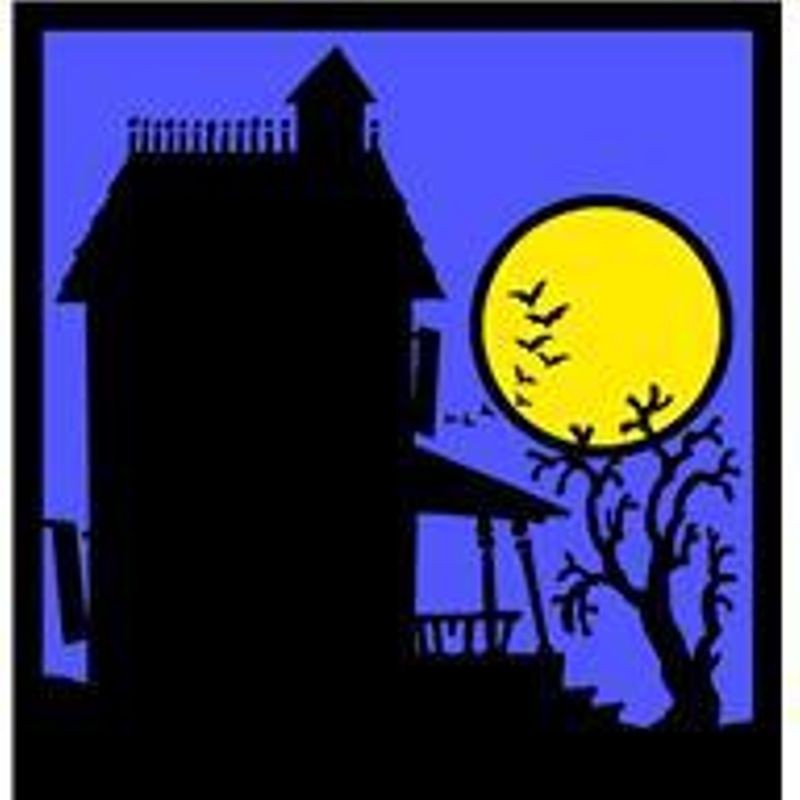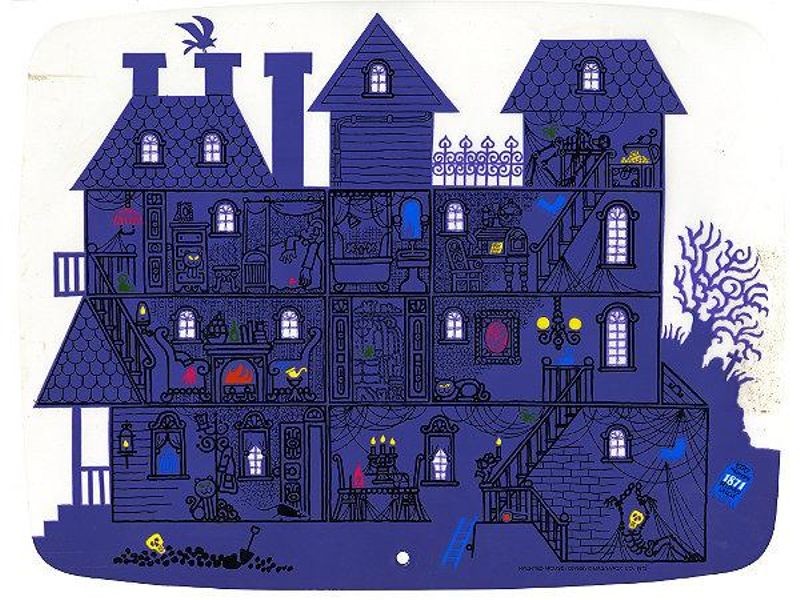

Every city has one: a house that scares all the local kids. Sometimes, these houses have long, dark histories that seem to have been created by horror authors in the distant, misty past. Other times, it’s merely their long-standing dereliction that lets the mind wonder what sort of evil dwells within. These creaky, creepy homes have inspired games of all sorts: board, card, arcade, console, and PC. Perhaps it’s the contained nature of a haunted house narrative landscape that made them so successful for consoles. Or perhaps it was the familiarity of players with the concept of them. Maybe it’s the desire to actually see what happens in these fog-shrouded mansions. The growth of horror films in the 1970s and 80s certainly helped, with games at first being influenced by films. By the 2000s, games had gone from taking inspiration from films and television to being the influence for movies and TV series!
Before all of that, though, there were the early entries into the genre.
Possibly the first video game to use the haunted house theme was also one of the games for the first home gaming system, the Magnavox Odyssey. The Odyssey used simple cards to hold different games. Game #4 was Haunted House.
The Odyssey had a limited amount of power to work with, meaning that there were no graphics other than small dots generated on the screen. Magnavox’s solution to the lack of graphics was to include transparent overlays for the different games which were held to the screen by static. Perhaps the most stunning of these was the overlay for Haunted House, a somewhat abstract image of a stereotypical haunted house done in purple. The overlays would allow the dots on the screen to be visible during play while adding an element of visual interest.

Screen Overlay for the Magnavox Odyssey’s Haunted House, CHM# 102695440
There were a couple of other quirks to the gameplay which combined elements of board games with the limited graphics. First off, to start the game, one player would play the ‘Detective’ with the other playing the role of the ‘Ghost.’ To start the game, the Detective would have to close their eyes while the Ghost player used both their own controller and the Detective’s to choose the location of a treasure in the house. The Detective then opened his eyes and the game would begin. The game required the collection of clue and secret message cards and ended when the Detective captured the treasure and the players compared the number of clue cards they had gathered. While the game may not have been easy to play, Haunted House certainly qualifies as the first Horror video game.

Haunted House entry in the 1981 Atari Catalog.
The Atari Video Computer System (VCS, later known as the 2600) also had a game called Haunted House. The graphics capabilities of the VCS were much greater than those of the Odyssey, though it is in the gameplay that the real differences between the games are apparent. Atari’s Haunted House may have had simple graphics by today’s standards, but the game’s storyline certainly fit into the category of Horror game. The player ventured through Zachery Graves’ home, attempting to put together the three pieces of his urn and get it out of the haunted house while avoiding tarantulas, bats, and the ghost of Zachery Graves himself. The game was one of the first to feature multiple rooms and scrolling graphics and is considered by many to be the pre-cursor of the Horror Survival game that would become popular in the 1990s.
Nintendo’s successful Castlevania had players controlling Simon Belmont on an adventure through Dracula’s castle. The success of the title spawned many follow-ons for various Nintendo consoles as well as for the arcade. Castlevania is often considered to be the finest ‘platformer’ game of the 1980s. It’s success is often pointed to as the impetus for further Horror video games in the late 1980s and 1990s. Nintendo also released one of most influential games in the horror genre for it’s Nintendo Entertainment System (NES). Based on a rather poor Japanese film of the same name, Sweet Home is a role-playing game in the Horror genre. It provided complex play and while it never made much impact in the US, it did influence the hugely-successful Resident Evil franchise. In fact, Resident Evil started out as an attempt to remake Sweet Home!
The Horror video game quickly moved beyond consoles to the personal computer. Infocom’s text-based adventure The Lurking Horror certainly qualified as a haunted house game influenced by the writings of H. P. Lovecraft.
Perhaps the best-known of all the early haunted house games is Maniac Mansion from Lucasfilm Games originally developed for the Commodore 64 and Apple II. Maniac Mansion used Lucasfilm’s SCUMM software engine through which players could choose a verb-noun combination such as “open door” to explore the Edison mansion, based on the Main House at Skywalker Ranch, where a mind-controlling meteor landed twenty years before the games opening. The game was well-received, especially for it’s use of humor and cut-scenes. Maniac Mansion was eventually ported to several other systems, including the Atari ST-family, Amiga and NES. It not only spawned a sequel, Day of the Tentacle, but also a Canadian television series that ran for three seasons. Later, the popular Alone in the Dark spawned several sequels and a poorly-received film franchise.

Maniac Mansion for the Atari ST (Gift of Maurine Starkey), CHM# 102715662
By the mid-1990s, Horror video games were well-established as a primary genre in the gaming sphere. The release of Resident Evil in 1996 established what became known as the Survival Horror genre that many Japanese companies began to work in. Other successful series such as Clock Tower, Fatal Frame, and the Penumbra games all took the concept of the haunted house and added intense graphics and more complicated gameplay. Resident Evil even spawned a series of hit movies.
So, the haunted house game has survived its trip through forty years of technological change and terror. It is fascinating to look at how two things as different as the Odyssey’s Haunted House and Resident Evil can have the same origin: that scary house on the street you grew up on.